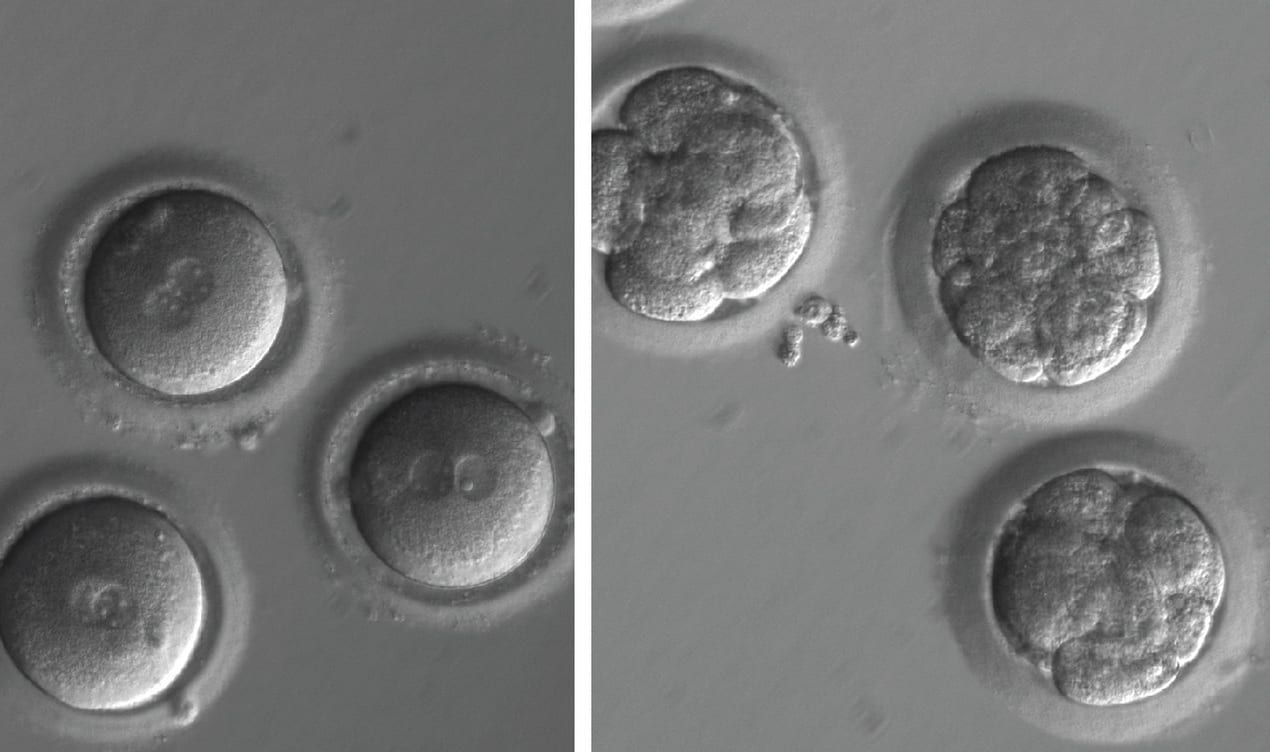
Newly fertilised eggs before gene editing, left, and embryos after gene editing and a few rounds of cell division. Photo: Shoukhrat Mitalipov
A genetic heart disorder has been fixed using gene editing in human embryos.
In a paper published in the journal Nature, Oregon scientist Shoukhrat Mitalipov and his colleagues used the gene-editing tool CRISPR-Cas9 to fix a defective gene in eggs fertilised with sperm from a hypertrophic cardiomyopathy patient.
Tech correspondent Peter Griffin of the Science Media Centre assesses the potential impact of the research here in New Zealand, and discusses how current laws need overhauling to cater for this powerful new technology.
Plus, how artificial intelligence and machine learning will help you take better photos and make better meals... Google and MIT researchers have developed new machine learning algorithms that can retouch your photos before you take them. Similar technology is also being used to produce a recipe from a photo of a finished dish.

